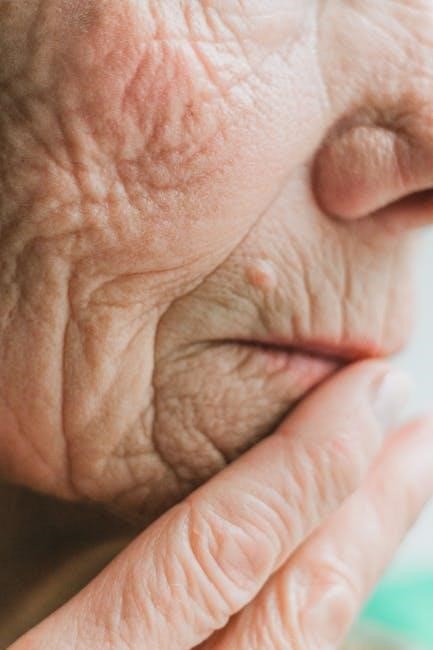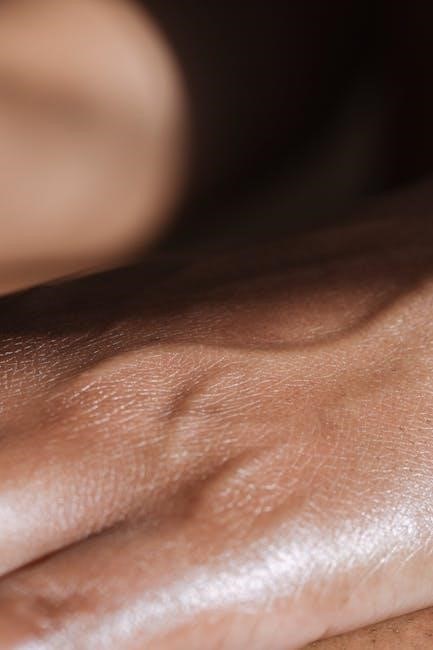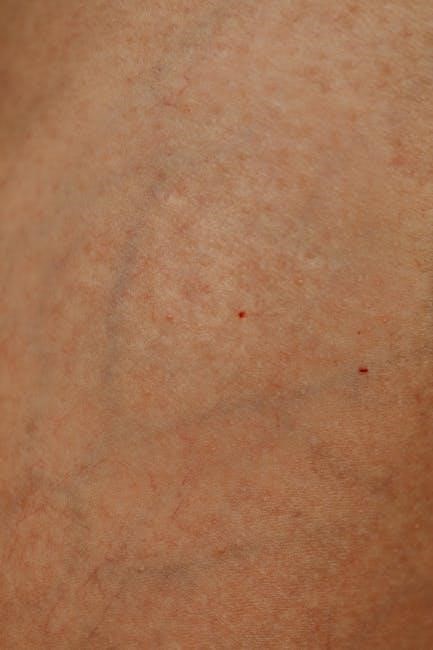The essentials of human anatomy and physiology laboratory manual provide a comprehensive guide for students to explore the human body’s structure and function using
- various
laboratory activities and exercises.
Overview of the Laboratory Manual
The laboratory manual provides a detailed outline of the essentials of human anatomy and physiology, including the structure and function of the human body’s systems. The manual is divided into sections, each focusing on a specific aspect of human anatomy and physiology, such as the skeletal, muscular, and nervous systems. The manual includes
- various
laboratory activities and exercises, such as dissection and analysis of animal specimens, to help students understand the material. The manual also includes
- step-by-step
instructions and illustrations to guide students through the laboratory activities. Additionally, the manual provides a glossary of terms and a list of resources for further study. The laboratory manual is designed to be used in conjunction with a human anatomy and physiology textbook and is suitable for students at the undergraduate level. The manual is available in print and digital formats.

Key Components of the Laboratory Manual
The manual includes essential laboratory activities and
- exercises
for human anatomy and physiology studies.
Body Regions and Surface Anatomy
The essentials of human anatomy and physiology laboratory manual covers body regions and surface anatomy, providing students with a comprehensive understanding of the human body’s structure.
The manual includes detailed diagrams and illustrations of the different body regions, allowing students to visualize and identify the various anatomical features.
Students learn to identify and explore the surface anatomy of the human body, including the locations of major organs and systems.
The laboratory activities and exercises help students to develop their observational and analytical skills, enabling them to understand the relationships between different body regions and systems.
The manual also includes activities that focus on the identification of body cavities and abdominopelvic regions, demonstrating the importance of surface anatomy in understanding human physiology.
By studying body regions and surface anatomy, students gain a deeper understanding of the human body’s structure and function, preparing them for further study in anatomy and physiology.
The manual’s coverage of body regions and surface anatomy is thorough and detailed, making it an essential resource for students of human anatomy and physiology.
The laboratory manual is designed to help students develop a comprehensive understanding of the human body, and its coverage of body regions and surface anatomy is a key part of this.
Overall, the essentials of human anatomy and physiology laboratory manual provides students with a thorough understanding of body regions and surface anatomy, preparing them for success in their studies.
The manual’s use of diagrams, illustrations, and laboratory activities makes it an engaging and effective learning tool.
By using the manual, students can gain a deeper understanding of the human body and its many complex systems.
The manual is a valuable resource for students of human anatomy and physiology, and its coverage of body regions and surface anatomy is just one of its many strengths.
The manual is designed to be used in conjunction with other learning materials, and its comprehensive coverage of body regions and surface anatomy makes it an essential part of any anatomy and physiology course.
The manual’s focus on laboratory activities and exercises helps students to develop their practical skills, and its coverage of body regions and surface anatomy is a key part of this.
The manual is a comprehensive resource that covers all aspects of human anatomy and physiology, and its coverage of body regions and surface anatomy is thorough and detailed.
The manual is an essential tool for students of human anatomy and physiology, and its use can help students to achieve success in their studies.
The manual’s coverage of body regions and surface anatomy is just one of its many strengths, and it is a valuable resource for anyone studying human anatomy and physiology.
The manual is designed to be used by students at all levels, from beginner to advanced, and its comprehensive coverage of body regions and surface anatomy makes it an ideal resource for anyone looking to learn more about the human body.
The manual’s use of clear and concise language makes it easy to understand, and its coverage of body regions and surface anatomy is a key part of its comprehensive coverage of human anatomy and physiology.
The manual is a valuable resource for anyone looking to learn more about the human body, and its coverage of body regions and surface anatomy is just one of its many strengths.
The manual’s comprehensive coverage of human anatomy and physiology makes it an essential resource for students, and its use can help students to achieve success in their studies.
The manual’s focus on laboratory activities and exercises helps students to develop their practical skills, and its coverage of body regions and surface anatomy is a key part of this.
The manual is a comprehensive resource that covers all aspects of human anatomy and physiology, and its coverage of body regions and surface anatomy is thorough and detailed.
The manual is an essential tool for students of human anatomy and physiology, and its use can help students to gain a deeper understanding of the human body and its many complex systems.
The manual’s coverage of body regions and surface anatomy is just one of its many strengths, and it is a valuable resource for anyone studying human anatomy and physiology.
The manual is designed to be used by students at all levels, from beginner to advanced, and its comprehensive coverage of body regions and surface anatomy makes it an ideal resource for anyone looking to learn more about the human body.
The manual’s use of clear and concise language makes it easy to understand, and its coverage of body regions and surface anatomy is a key part of its comprehensive coverage of human anatomy and physiology.
The manual is a valuable resource for anyone looking to learn more about the human body, and its coverage of body regions and surface anatomy is just one of its many strengths;
The manual’s comprehensive coverage of human anatomy and physiology makes it an essential resource for students, and its use can help students to achieve success in their studies.
The manual is a comprehensive resource that covers all aspects of human anatomy and physiology, and its coverage of body regions and surface anatomy is thorough and detailed, making it an essential tool for students.

Practical Applications of the Laboratory Manual
Students apply laboratory manual concepts to real-life situations using
- practical
exercises and activities to develop essential skills.
Dissection and Analysis of Animal Specimens
The dissection and analysis of animal specimens is a crucial aspect of the laboratory manual, allowing students to explore the internal structure of organs and systems. Through the use of fetal pig specimens, students can identify and examine the various components of the digestive, respiratory, and circulatory systems. The laboratory manual provides detailed instructions and guidelines for the dissection process, ensuring that students can safely and effectively explore the anatomy of the specimens. By analyzing the specimens, students can gain a deeper understanding of the relationships between different structures and systems, and develop essential skills in observation, measurement, and recording. The use of animal specimens also enables students to compare and contrast the anatomy of different species, promoting a broader understanding of the principles of anatomy and physiology. This hands-on approach helps students to develop a more comprehensive understanding of the subject matter.

Additional Resources and Features
The manual includes online resources and
- interactive
features to enhance learning and engagement.
Unlocking Value and Safety Precautions
The essentials of human anatomy and physiology laboratory manual provides a comprehensive guide to unlocking its full value, with detailed explanations of features and functionalities, as well as safety precautions to ensure a safe and effective learning environment.
The manual emphasizes the importance of following proper safety protocols when conducting laboratory activities, including the use of personal protective equipment and proper handling of specimens and equipment.
By following these safety precautions, students can minimize the risk of injury and ensure a successful and enjoyable learning experience.
The manual also provides tips and guidelines for getting the most out of the laboratory manual, including how to navigate the content, use the interactive features, and access additional resources.
Overall, the essentials of human anatomy and physiology laboratory manual is a valuable resource for students and instructors alike, providing a comprehensive and safe learning environment.
The manual is designed to be user-friendly and accessible, with clear instructions and concise language.
It is an essential tool for anyone studying human anatomy and physiology.

and Final Thoughts
The laboratory manual provides a comprehensive conclusion with final thoughts on human anatomy and physiology using various laboratory activities and exercises effectively.
Importance of the Laboratory Manual in Anatomy and Physiology Education
The laboratory manual is a crucial component in anatomy and physiology education, providing students with a comprehensive guide to explore the human body’s structure and function. Using various laboratory activities and exercises, students can gain hands-on experience and develop a deeper understanding of the subject matter. The manual includes detailed explanations of features and functionalities, allowing students to unlock the full value of their learning experience. By following safety precautions and guidelines, students can ensure a safe and effective learning environment. The laboratory manual is also useful for the laboratory animal setting, providing interesting comparisons on physiology and anatomy between many species. Overall, the laboratory manual plays a vital role in anatomy and physiology education, providing students with a thorough understanding of the human body and its functions, using tables, figures and
- lists
to support learning.
